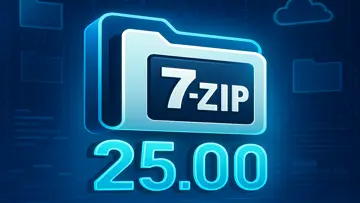Efficient Thermal Management with Expert Design Tools
Shell & Tube Heat Exchanger Design offers comprehensive tools for professionals aiming to create high-performance heat exchangers with precision and efficiency.
Shell & Tube Heat Exchanger Design Review
Shell & Tube Heat Exchanger Design is a powerful software application designed to assist engineers and professionals in the design and analysis of shell and tube heat exchangers. This software provides a user-friendly interface with robust features that enable users to efficiently design, evaluate, and optimize heat exchangers for various industrial applications.
Key Features:
- Intuitive Interface: The software offers an intuitive interface that makes it easy for users to navigate and access the tools needed for heat exchanger design.
- Thermal Design Calculations: Shell & Tube Heat Exchanger Design provides comprehensive thermal design calculations, including heat transfer coefficients, pressure drops, and surface areas, to ensure optimal performance.
- Material Selection: Users can select from a wide range of materials for shell and tube construction, allowing for customization based on specific project requirements.
- Cost Optimization: The software includes features to help users optimize heat exchanger designs while keeping costs in check, making it a valuable tool for project budgeting.
- Efficiency Analysis: With simulation capabilities, users can analyze the efficiency of heat exchanger designs under different operating conditions to achieve maximum performance.
Benefits:
- Streamlined Design Process: Shell & Tube Heat Exchanger Design streamlines the design process, saving time and resources for engineering teams.
- Improved Performance: By using this software, engineers can create optimized heat exchanger designs that result in improved overall performance.
- Cost Savings: The cost optimization features of the software help in reducing project costs without compromising on quality or efficiency.
- Enhanced Decision-Making: With detailed analysis and simulation capabilities, users can make informed decisions about heat exchanger designs.
Shell & Tube Heat Exchanger Design is a comprehensive tool that empowers engineers to efficiently design and analyze shell and tube heat exchangers for various industrial applications. With its user-friendly interface, robust features, and ability to optimize designs for performance and cost, this software is a valuable asset for engineering teams looking to enhance their heat exchanger design capabilities.
Overview
Shell & Tube Heat Exchanger Design is a Commercial software in the category Development developed by Shell & Tube Heat Exchanger Design.
The latest version of Shell & Tube Heat Exchanger Design is currently unknown. It was initially added to our database on 11/19/2007.
Shell & Tube Heat Exchanger Design runs on the following operating systems: Windows.
Shell & Tube Heat Exchanger Design has not been rated by our users yet.
Pros
- User-friendly interface for easy navigation and usage
- Detailed design calculations for accurate heat exchanger analysis
- Ability to customize various design parameters to meet specific requirements
- Incorporates industry standards and best practices for heat exchanger design
- Provides visual representations of the heat exchanger design for better understanding
Cons
- May require a learning curve for new users unfamiliar with heat exchanger design principles
- Complex calculations may be overwhelming for users with limited engineering background
- Some advanced features may only be available in the paid version of the software
- Potential for occasional technical glitches or bugs that could impact usability
FAQ
What is the purpose of a shell and tube heat exchanger?
A shell and tube heat exchanger is used to transfer heat between two fluids, typically with one fluid inside the tubes and the other fluid flowing across the outside of the tubes.
What are the advantages of shell and tube heat exchangers?
Shell and tube heat exchangers offer high heat transfer efficiency, versatility, and ease of maintenance. They can handle large temperature differences, high pressures, and corrosive fluids.
What are the main components of a shell and tube heat exchanger?
The main components include a shell, tubes, tube sheets, baffles, pass partitions, nozzles, and a bonnet or channel cover.
How does a shell and tube heat exchanger work?
Heat is transferred through the walls of the tubes from one fluid to another. The hot fluid enters the tubes while the cold fluid flows across the outer surface of the tubes. The flow configuration can be parallel (co-current) or counter-current.
What are some factors to consider in shell and tube heat exchanger design?
Important design considerations include heat load, flow rates, pressure drop, fouling potential, material selection, thermal expansion, and maintenance accessibility.
What is tube-side fouling?
Tube-side fouling refers to the accumulation of deposits or scaling on the inner surface of the tubes due to impurities or dissolved substances in the fluid. It reduces heat transfer efficiency and may require periodic cleaning.
How can counter-current flow improve heat transfer in a shell and tube heat exchanger?
Counter-current flow allows for a greater temperature difference between the hot and cold fluids along the length of the exchanger, resulting in higher overall heat transfer rates.
What is the purpose of baffles in a shell and tube heat exchanger?
Baffles are plates or rods inserted inside the shell to direct the flow of fluid and enhance heat transfer. They create a tortuous path for the fluid, increasing turbulence and improving heat exchange efficiency.
What are some common maintenance practices for shell and tube heat exchangers?
Regular cleaning, inspection of tubes for leaks or damage, checking tube-side and shell-side fouling, monitoring pressure drop, and replacing worn-out parts are common maintenance practices.
Can a shell and tube heat exchanger be used for both heating and cooling applications?
Yes, shell and tube heat exchangers are versatile and can be used for both heating and cooling applications by reversing the flow direction of the fluids.

Minh Ong
I'm Minh, a software engineer and author with a passion for exploring and writing about the latest in software and technology. With my experience in software development and a specialization in software updates and content creation, I bring a deep understanding of the tech landscape to my reviews and articles. My focus is on providing you with comprehensive insights into general software topics and the latest industry news.
Latest Reviews by Minh Ong
Latest Reviews
|
|
Intel(R) Dynamic Tuning Technology
Intel's Dynamic Tuning Technology Optimizes Performance and Efficiency |
|
Native Instruments Una Corda
Native Instruments Una Corda: A Unique Sample Library for Soft Piano Tones |
|
|
Hybrid Mark Knight Expansion
Hybrid Mark Knight Expansion by AIR Music Tech GmbH Review |
|
|
Helper-Equalizer
Helper-Equalizer: Versatile Audio Tool for Custom Sound Tuning |
|
|
Helper-Saturator
Helper-Saturator: A Promising Tool for Saturation Enhancement |
|
|
Ravage Lite
Ravage Lite: A Lightweight Audio Enhancement App |
|
|
UpdateStar Premium Edition
Keeping Your Software Updated Has Never Been Easier with UpdateStar Premium Edition! |
|
|
Microsoft Edge
A New Standard in Web Browsing |
|
|
Google Chrome
Fast and Versatile Web Browser |
|
|
Microsoft Visual C++ 2015 Redistributable Package
Boost your system performance with Microsoft Visual C++ 2015 Redistributable Package! |
|
|
Microsoft Visual C++ 2010 Redistributable
Essential Component for Running Visual C++ Applications |
|
|
Microsoft OneDrive
Streamline Your File Management with Microsoft OneDrive |





